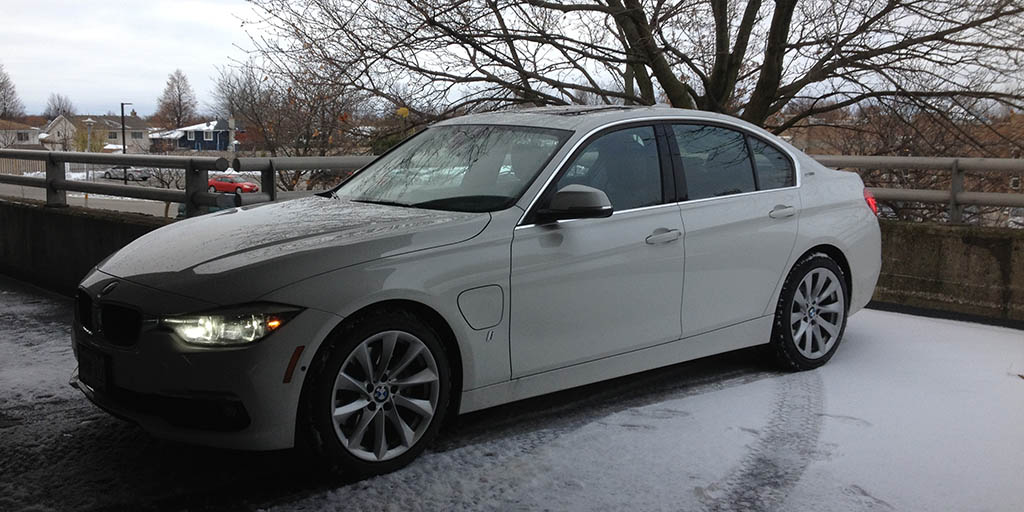Motoring: 2017 BMW 330e: The car of the future
 CREDIT: NAUMAN FAROOQ
CREDIT: NAUMAN FAROOQThe 2017 BMW 330e combines both an electric car and a conventional car.
Welcome to 2017. Let’s kick off with what would have been considered, not so long ago, as the car of the future.
I’m talking about plug-in hybrids, and given our current infrastructure, these vehicles make a lot of sense. While there are plenty of strictly electric vehicles currently on sale, they still have a major drawback of not being of much use on a long distance drive because of range limitations, places where you can charge them and even if you find a charge point; it takes too much time to put any life back into them.
So, until we have charging stations every 10 kilometres that can amp up your car in just a few minutes, a full electric car can only deliver limited use. Take the BMW i3 for example, which on a full charge would realistically give you 150 kilometres of driving. That is not enough to take me from London to Toronto.
That is where a BMW 330e can come in, and be of better help. This might look like any other BMW 3 series sedan, but under the skin, it has two drivetrains. There is a turbocharged 2.0-litre, four-cylinder motor that develops 180 horsepower, plus there is an electric motor that produces 87 horsepower. BMW says that combined output is rated at 248 horsepower and 310 pound per foot of torque.
The idea here is that you charge up the car and you’ll be able to get 27 kilometres of emissions free driving, but then the gasoline engine will take you anywhere else you’d like to go. Simple, but does it work?
During my test week, I plugged the car in, and gave it a full charge on three occasions, but the most I got out of its battery was 13 kilometres. All three times I got the same result, which was disappointing, since that is a lot less than advertised. However, conditions were less than ideal; I had this car during a cold week in November and would start the car with the electric drive. It had to run its heater, plus the heated seats and heated steering wheel, which drains power. The cold weather also doesn’t help the battery, as any cell prefers warm temperatures.
On top of that my tester was wearing proper winter tires and not the low-rolling resistance tires such cars usually come equipped with as standard equipment. If I ran this test in May or June, when temperatures are neither too hot nor too cold, this car will achieve the full 27 kilometres in electric only mode.
The best way to use the combination of battery and gas power is to use the combustion engine for driving on the highway, but then switch to electric drive in the stop-and-go city traffic. Trust me, it is a great feeling to be crawling through traffic, and not burn a drop of fuel.
However, when the 330e did burn fuel, it burned a lot more than I was expecting, hence my driving cycle showed an average of 8.3 litres per 100 kilometres. A BMW 320i would burn less, and costs much less to buy as well. So why did the 330e consume this much?
Again, I think I know the culprit. The 330e is heavy (1,830 kilograms) since it has two drivetrains. Therefore, when the car is running on gas, it is lugging the weight of the electric motor, and its 7.6 KW Li-ion battery pack. The same applies when it’s running on electric drive, as it’s then carrying the weight of the gasoline engine, and fuel tank.
This vehicle has left me quite confused because while I enjoyed its dual personality, I wished its real world economy figures would have been a lot better. I also wished its price was lower than it is. Base price is $51,900, while my wellequipped tester was priced closer to $61,000. However, since it is a plug-in hybrid, you can drive it in the HOV lanes, even if you’re by yourself, and you’ll get a cheque for $7,730 from the Ontario government because you bought what they consider to be a green vehicle.
Is that enough to convince most potential buyers? I’ll say, maybe. Here’s the thing, if you have access to charge points on your regular commute, than it makes a lot of sense and buying a plug-in hybrid is much cheaper than buying an electric car as well as a conventional car. The technology is still in its infancy, but things will only get better with time. I think I’ll wait, just a little bit longer.














